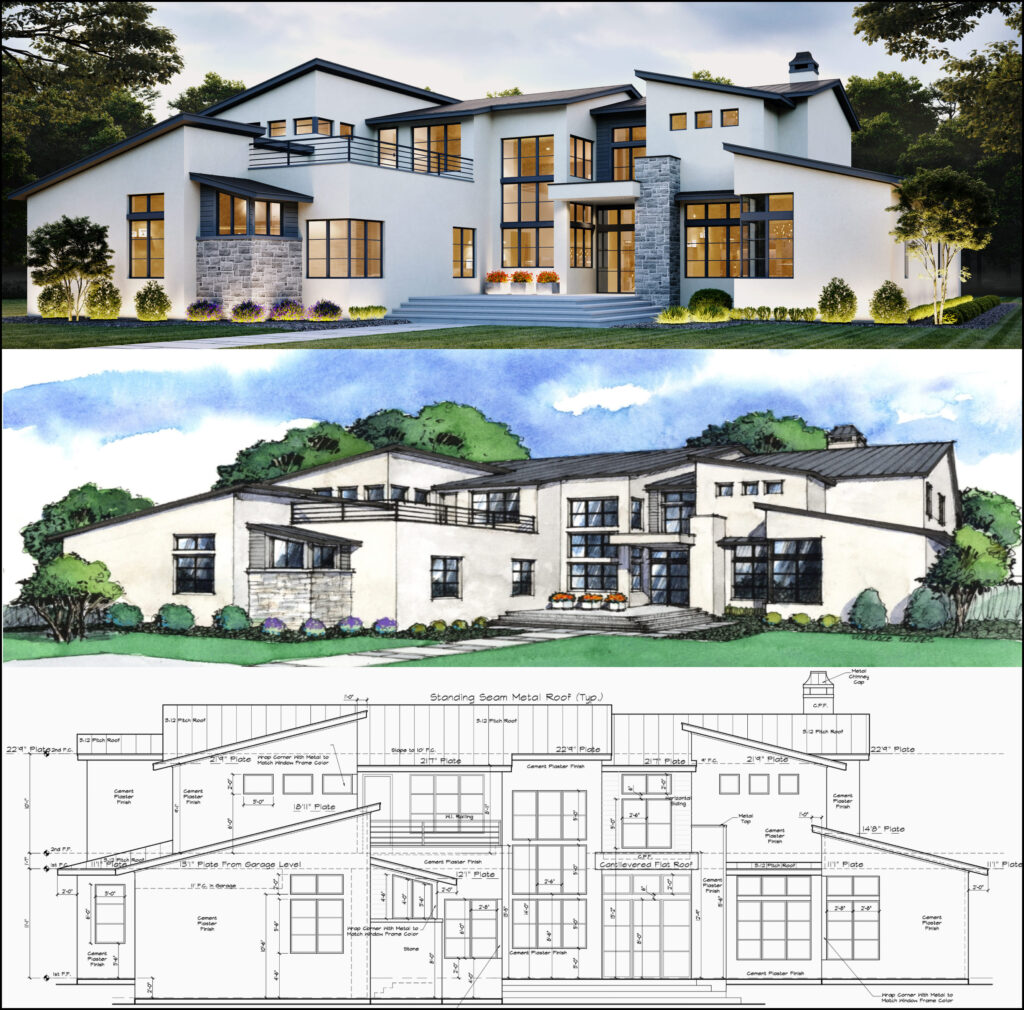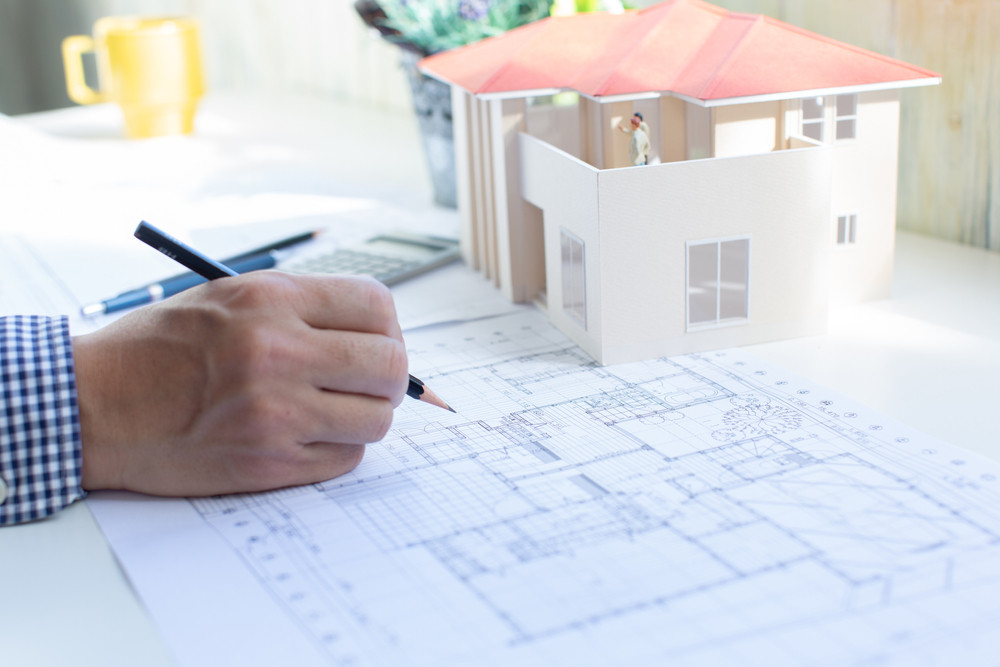Top Factors to Pick CDA Architects for Your Residential or Commercial Designs
Top Factors to Pick CDA Architects for Your Residential or Commercial Designs
Blog Article
Comprehending the Collaborative Process Between Architects and Engineers in Modern Construction Projects
The joint process in between engineers and engineers is necessary in modern building and construction jobs, as it integrates design intent with design feasibility. Checking out these characteristics exposes understandings that could substantially impact job end results and overall market standards.
The Value of Cooperation
The collaborative harmony in between engineers and designers is crucial for the successful awareness of any kind of construction job. This collaboration unites unique expertise and point of views, allowing the combination of cutting-edge layout with practical engineering options. By interacting, architects and engineers can guarantee that a job not just fulfills visual and functional requirements but likewise sticks to safety and security, sustainability, and financial restraints.
Collaboration fosters a shared vision, helping with the positioning of goals and assumptions from the beginning. This positioning is vital in resolving possible obstacles and mitigating threats that can emerge throughout the task lifecycle. A collective technique enables for the efficient allocation of resources, maximizing both time and price.
The value of collaboration includes the repetitive process of design and construction, where responses from designers can notify architectural decisions, causing more possible and lasting layouts. On the other hand, architects can inspire designers to believe creatively concerning exactly how to achieve architectural stability without compromising imaginative intent. Eventually, the collaborative partnership in between architects and designers is not simply beneficial; it is basic to the development of top quality, useful, and ingenious built settings that satisfy the demands of society.
Interaction Methods and Devices
Efficient interaction methods and devices are crucial for promoting cooperation between engineers and engineers throughout the task lifecycle. Establishing clear networks of communication is necessary to ensure that all staff member are lined up with project goals, timelines, and responsibilities. Routine conferences, both in-person and virtual, supply opportunities for stakeholders to go over progress, address issues, and make educated decisions.
Using task management software application, such as BIM (Structure Information Modeling) platforms, boosts collaboration by enabling real-time sharing of style alterations and technical specs. These devices promote openness, permitting designers and engineers to envision changes and examine their influence on the total project.

Shared Objectives and Project Vision

Establishing common goals entails open dialogue and a complete understanding of each discipline's payments. Architects normally concentrate on layout intent, spatial connections, and customer experience, while engineers highlight architectural integrity, systems performance, and conformity with regulations (cda architects). When these point of views are straightened, the result is a cohesive task that complies with both innovative desires and technological feasibility
In addition, a well-defined project vision fosters responsibility amongst team members, motivating each individual to take possession of their function in attaining the wanted outcome. Regular check-ins and collective workshops can better enhance this dedication, enabling adjustments to be made as the job progresses. Inevitably, a common vision not only enhances find out here teamwork however likewise find more information raises the top quality of the last deliverable, bring about effective task conclusion.
The Duty of Technology
Leveraging modern technology has come to be necessary in boosting partnership between designers and engineers. The assimilation of advanced software program tools promotes real-time communication and details sharing, allowing groups to function a lot more efficiently and successfully. Building Info Modeling (BIM) stands out as an essential modern technology, enabling both engineers and engineers to produce detailed 3D designs that envelop design intent and structural honesty. This shared aesthetic depiction reduces misconceptions and streamlines the decision-making process.
Additionally, cloud-based systems enable seamless collaboration, permitting task stakeholders to access and update project data from anywhere. This promotes a society of openness and responsibility, as adjustments can be tracked and assessed in real-time. In addition, mobile applications further enhance communication, providing on-site teams with instant access to project specifications and updates.
Emerging innovations such as artificial knowledge and artificial intelligence are also beginning to contribute in anticipating evaluation, helping teams recognize potential concerns before they emerge. Ultimately, the role of innovation in architecture-engineering cooperation not just enhances operations efficiencies yet also enhances development, leading to even more successful project end results. By accepting these technological advancements, engineers and engineers can make certain a more natural and productive joint procedure throughout the building and construction lifecycle.
Study in Successful Collaborations
Countless study highlight the extensive impact of reliable partnerships between engineers and engineers on like this project outcomes. One remarkable example is the cooperation on the High Line in New York City City, where landscape architects, designers, and urban organizers collaborated to change an abandoned railway into a lively public park. This multidisciplinary approach not just enhanced the visual quality yet also made certain structural safety and security and environmental sustainability.
An additional exemplary situation is the design and building of the Sydney Music Hall. The collaboration in between architect JÃ ¸ registered nurse Utzon and structural designer Ove Arup exemplified ingenious problem-solving. Their partnership permitted for the renowned shell-like layout while addressing complicated design challenges, eventually bring about a timeless building masterpiece.
The Burj Khalifa in Dubai further shows the value of collaborative efforts. cda architects. The assimilation of architecture and engineering expertise allowed the job group to attain unprecedented heights while adhering to security policies and visual vision
These examples highlight the relevance of interaction, trust, and shared objectives. In today's complicated construction setting, such collaborations are important to navigating difficulties and providing jobs that meet both practical and visionary goals.
Final Thought
In final thought, the partnership between engineers and designers is vital for the success of modern construction projects. Efficient communication strategies, a shared job vision, and the combination of sophisticated technologies are vital elements that facilitate this collaboration.
Report this page